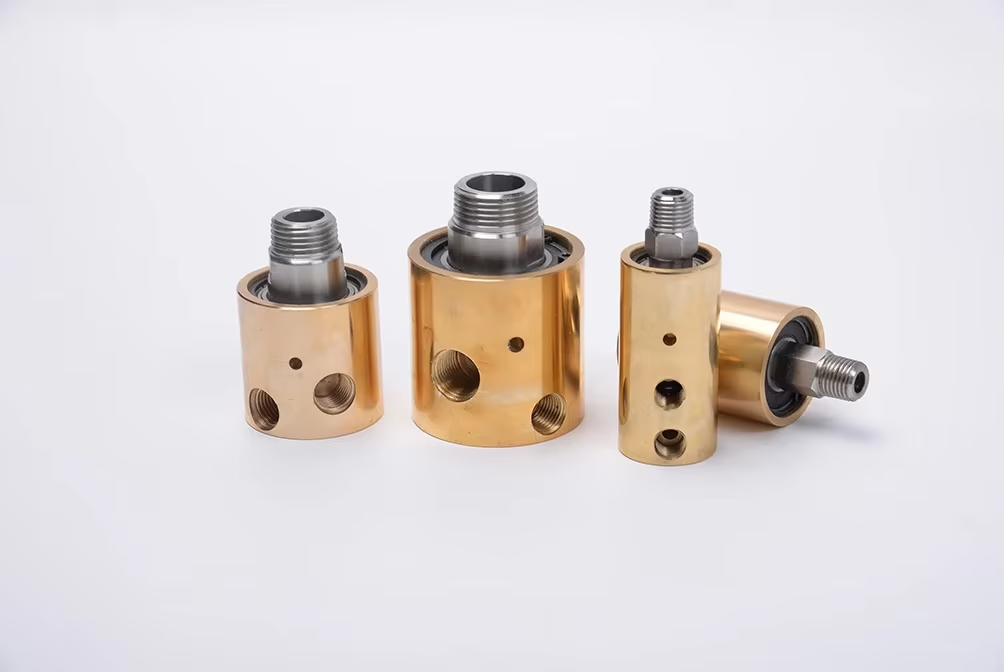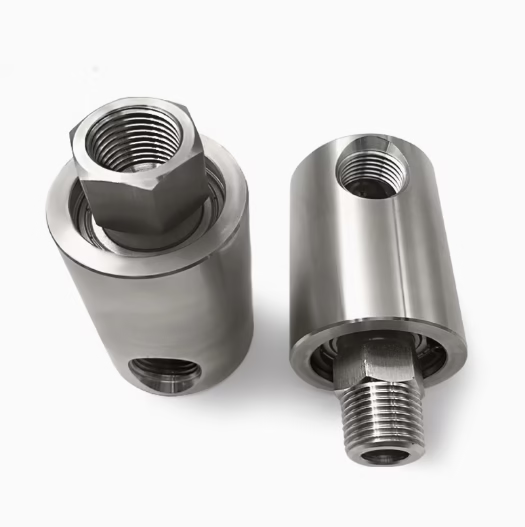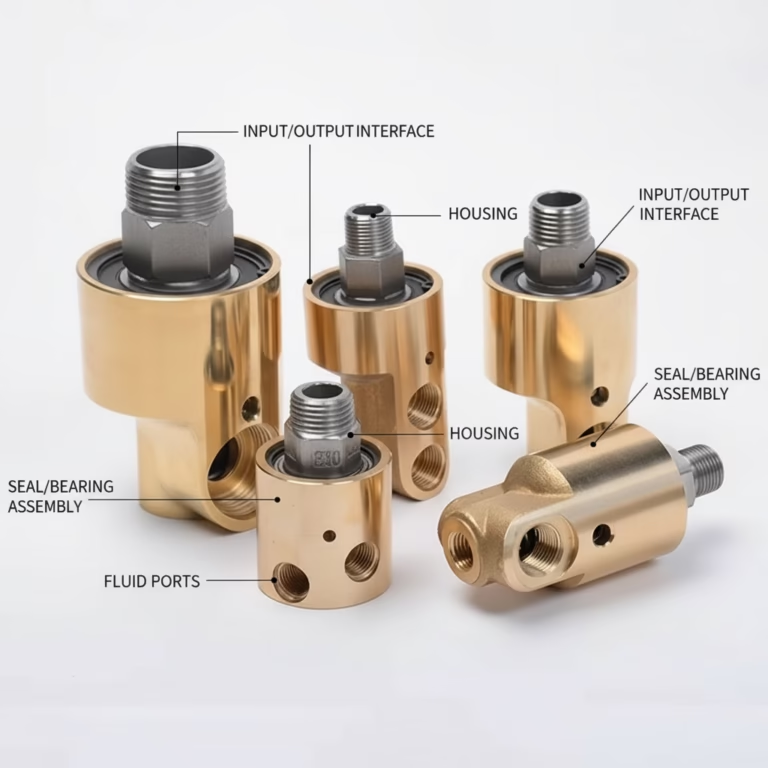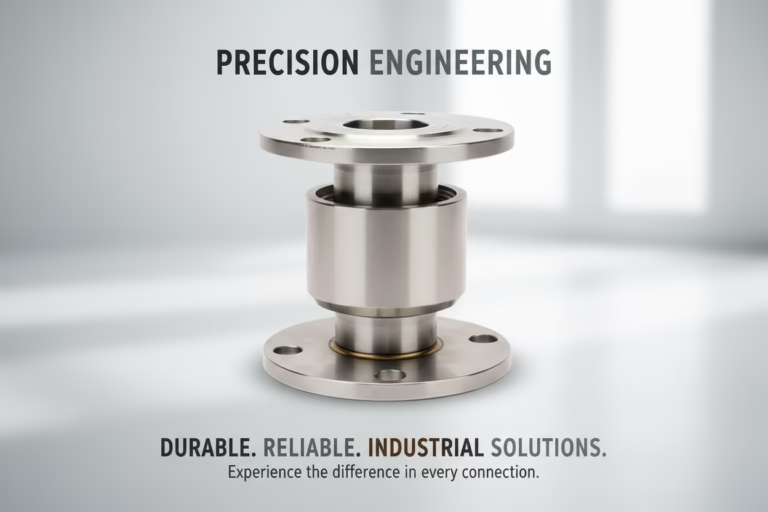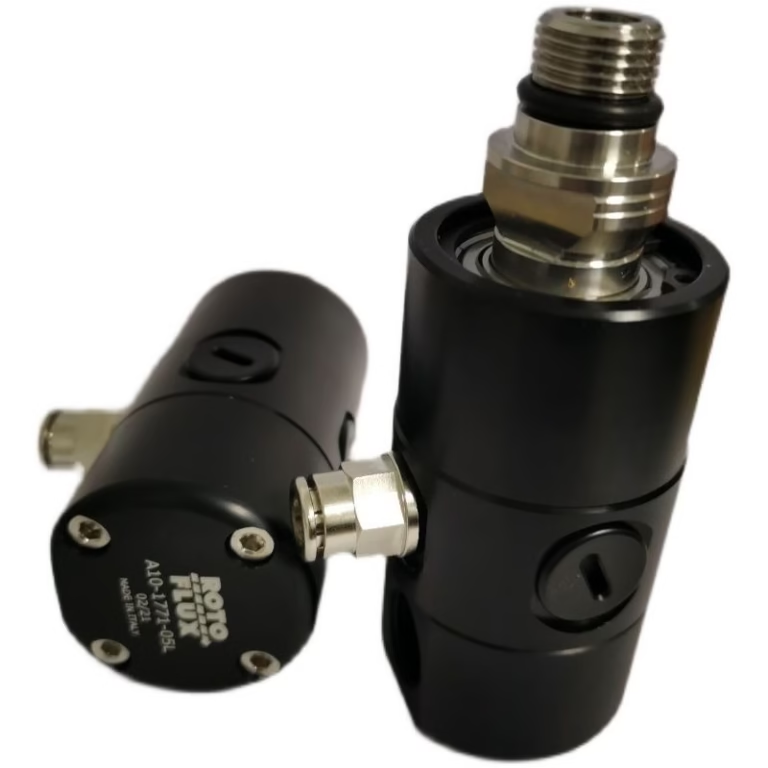What Is a Rotary Joint for Water? A Comprehensive Technical Guide
In the dynamic landscape of industrial machinery, the seamless transfer of fluids between stationary and rotating components is non-negotiable. Enter rotary joints for water—mechanical marvels designed to channel water, steam, or coolant into rotating systems without leaks or interruptions. Whether in agricultural irrigation, food processing, or aerospace engineering, these devices are the unsung heroes ensuring operational efficiency. This article is written specifically for engineers, technicians, and purchasing specialists, providing a comprehensive overview of the definition, working principles, types, applications, and selection criteria for water rotary joints. Our goal is to offer you a thorough and authoritative technical guide.
Introduction to Rotary Joints for Water Systems
A rotary joint for water—often called a water swivel or rotary union—is a precision-engineered device designed to transfer water (or other fluids) between stationary and rotating components. Unlike static pipe connections, these devices maintain continuous fluid flow while allowing rotational movement, making them critical in applications requiring simultaneous motion and fluid transfer.
Why Are Water Rotary Joints Important?
In industries like manufacturing, agriculture, and medical technology, equipment often requires continuous fluid delivery during rotational motion. Traditional static connections would fail under such conditions due to:
Hose twisting/kinking
Seal degradation from constant movement
Pressure fluctuations causing leaks
Rotary joints solve these challenges by combining dynamic sealing technology with precision bearings, enabling leak-free operation even at high speeds and pressures.
Core Components of a Water Rotary Joint
A typical water rotary joint consists of:
Rotor Assembly:
Seal Rings: Often made from PTFE, nitrile rubber, or metallic composites for chemical resistance.
Bearings: Ball bearings or roller bearings support radial/axial loads.
Stator Housing:
Inlet/Outlet Ports: Configured for specific flow rates and pressure ratings.
Secondary Seals: Back-up rings prevent leakage between primary seals.
Drive Mechanism:
Keyways/Splines: Transmit torque from motor to rotor.
Coupling Systems: Ensure concentric alignment during rotation.
Working Principle
As the rotor spins, the stator remains stationary, allowing water to flow through internal channels. Seals and bearings ensure minimal friction and zero leakage, even at high speeds or pressures. For example, in a printing press, a rotary joint channels coolant to a rotating cylinder, preventing overheating and ensuring consistent print quality.
Types of Rotary Joints for Water Applications
Water rotary joints are categorized by:
Configuration:
1. Single-Flow Rotary Joints
Design: One fluid passage for unidirectional flow.
Use Cases: Cooling systems in automotive manufacturing, lubrication in industrial machinery.
Example: A single-flow joint in a wind turbine transfers hydraulic fluid to the rotating blades.
2. Dual-Flow Rotary Joints
Design: Two separate channels for simultaneous fluid transfer.
Use Cases: Food processing (e.g., transferring hot water and steam to sterilize equipment).
Example: A dual-flow joint in a bottling plant handles both cleaning agents and cooling water.
3. Multi-Channel Rotary Joints
Design: Three or more passages for complex fluid management.
Use Cases: Oil refineries, chemical plants, and medical equipment (e.g., MRI machines).
Example: A multi-channel joint in an offshore drilling rig transfers drilling mud and hydraulic fluid.
4. Combined Rotary Joints
Design: Integrates electrical slip rings with fluid channels.
Use Cases: Robotics, aerospace, and automation.
Example: A combined joint in a robotic arm transfers power and coolant simultaneously.
Pressure Rating:
Low-Pressure (0-500 PSI): Common in irrigation systems.
High-Pressure (500-5000+ PSI): Used in hydro-cleaning equipment.
Motion Type:
Continuous Rotation: For applications like turntables.
Oscillating Motion: Found in robotic arms and indexing tables.
By Material
Brass: Cost-effective for low-pressure applications.
Stainless Steel: Corrosion-resistant for chemical or marine environments.
Ceramic-Coated: Enhances durability in high-speed, abrasive conditions.
Working Principles of Water Rotary Joints
The sealing system operates through three primary mechanisms:
Radial Contact Seals:
Spring-loaded seals maintain contact pressure between the rotor and stator.
Labyrinth Seals:
Multi-stage grooves create tortuous paths for escaping fluid.
Effective in high-temperature environments where viscous fluids are present.
Magnetic Fluid Seals:
Ferrofluidic seals use magnetic fields to contain fluids.
It is ideal for hermetic applications requiring zero leakage.
Pressure Equalization:
Internal chambers often incorporate pressure-balancing holes to neutralize axial forces, preventing pressure-balancing operation.
Key Design Considerations
When specifying a water rotary joint, consider:
Fluid Compatibility:
Stainless steel (316L) for corrosive environments.
Anodized aluminum for lightweight applications.
Temperature Extremes:
Cryogenic joints: Handle sub-zero temperatures (e.g., LNG transfer).
High-temperature joints: Use ceramic seals for steam applications.
Speed Ratings:
DN Value: Determines maximum allowable RPM for safe operation.
Vibration Analysis: Critical for high-speed machinery.
Mounting Options:
Self-Supported: Ideal for compact machinery.
Externally Supported: Better for heavy loads or high vibrations.
Media Compatibility:
Corrosive Fluids: Select PTFE or Hastelloy for chemical resistance.
Abrasive Fluids: Use silicon carbide seals to prevent wear.
Pressure Ratings:
High-Pressure Applications: Use tungsten carbide seals (e.g., in oil drilling).
Case: Saint Gobain Automotive Glass (Shanghai) Co., Ltd.: Through an industrial water cycle project, in the top cone water cooling system, the use of water rotary joints optimizes the recycling of water resources, resulting in an annual water savings of 1.4 million cubic meters. The water rotary adapter operates stably at a pressure of 10 bar and a temperature of 60 ℃, effectively preventing leakage and improving the cooling efficiency of the equipment.
Common Applications in Industry
The application of water rotary joints spans nearly every sector of modern manufacturing, where they are critical for ensuring production continuity and product quality.
Steel and Metallurgy: In continuous casting machines, rotary joints feed cooling water into rotating crystallizer rolls and guide rolls to precisely control temperature and ensure the quality of the cast slab.
Machine Tool Industry: In machining centers and CNC lathes, through-spindle coolant systems use high-speed rotary joints to deliver high-pressure coolant directly to the cutting tool and workpiece, providing effective cooling and chip removal.
Pulp, Paper, and Printing: In the dryer sections and calenders of paper machines, rotary joints are responsible for transferring steam or hot water to the heating cylinders. In printing presses, they are used to cool the ink rollers.
Rubber and Plastics Industry: Equipment like calenders, internal mixers, and extruders all rely on rotary joints to supply heating or cooling media to their rolls or screws to control process temperatures.
Semiconductor Manufacturing: In wafer cleaning and polishing equipment, miniature, high-purity rotary joints are used to transfer deionized water or other chemical fluids.
Energy Sector: In wind turbines, rotary joints are used for the hydraulic power transfer and cooling of pitch control systems.
| Type | Technical Features | Typical Application Scenarios | Related LSI Keywords |
|---|---|---|---|
| General-Purpose Water Rotary Joint | Standardized design, cost-effective, suitable for common low-to-medium speed and pressure conditions. | Cooling systems in steel continuous casting, paper manufacturing, textiles, and plastics processing. | Standard rotary union, cooling water rotary joint |
| High-Speed Water Rotary Joint | Employs precision bearings and a special balanced seal design to withstand extremely high rotational speeds. | CNC machine tool through-spindle coolant systems, high-speed grinding equipment, printing machinery. | High-speed water rotary joint, spindle rotary union, coolant union |
| Hot Water Rotary Joint | Uses high-temperature resistant seal materials (e.g., silicon carbide, special graphite) and thermal insulation designs. | Heating rolls in the rubber and plastics industries, calenders, and laminators requiring hot water transfer. | Rotary joint for hot water, thermal oil rotary joint |
| High-Pressure Water Rotary Joint | Features a robust structure and seals capable of withstanding very high fluid pressure. | High-pressure water jet cleaning equipment, hydraulic systems, tunnel boring machines. | High-pressure rotary union, hydraulic rotary joint |
| Stainless Steel Rotary Joint | Wetted parts are made of stainless steel for superior corrosion resistance. | Food and beverage processing, pharmaceutical, and chemical industries with strict hygiene or corrosion-resistance requirements. | Sanitary rotary joint, corrosion-resistant rotary union |
| Nipple/Flange Type Joint | Offers different connection methods to suit various piping installation needs. | Various industrial piping systems. | Rotary joint connection types |
Maintenance and Troubleshooting
Common Failure Modes:
Seal Wear:
Caused by abrasive particles or misalignment.
Fix: Install filtration systems; perform periodic alignment checks.
Bearing Overload:
Excessive radial loads from improper installation.
Fix: Use load-rated bearings; install torque limiters.
Corrosion:
Galvanic corrosion between dissimilar metals.
Fix: Use dielectric spacers; switch to all-stainless construction.
Maintenance Schedule:
Daily: Visual inspection for leaks. Replace worn-out seals immediately to prevent leaks.
Quarterly: Lubricate bearings; check torque requirements. Use food-grade grease for food processing applications.
Annual: Disassemble for seal inspection; perform pressure testing. Ensure the joint is properly aligned to reduce stress on bearings.
Future Innovations
Emerging trends include:
1. Smart Rotary Joints
IoT Integration: Sensors monitor pressure, temperature, and wear in real-time.
Predictive Maintenance: Alerts trigger repairs before failures occur.
2. Eco-Friendly Materials
Biodegradable Seals: Reduce environmental impact in agricultural applications.
Recyclable Components: Minimize waste in manufacturing.
3. Compact Design
Modular Joints: Easy to install and upgrade in existing systems.
Space-Saving Solutions: Ideal for robotics and medical devices.
Condition Monitoring Systems:
Sensors embedded in joints track temperature, pressure, and vibration.
Predictive maintenance via IoT platforms.
3D-Printed Components:
Additive manufacturing enables complex geometries for improved sealing.
Reduced lead times for custom designs.
Self-Healing Materials:
Polymers with embedded microcapsules that release lubricants on demand.
Extends seal lifespan in harsh environments.
Choosing the Right Solution
When selecting a water rotary joint:
Define Requirements:
Pressure, temperature, flow rate, and motion type.
Evaluate Vendors:
Look for ISO 9001 certification and industry-specific expertise.
Test Prototypes:
Perform endurance testing under real-world conditions.
How to Select the Right Water Rotary Joint for Your Application
Choosing the correct water rotary joint is crucial for ensuring optimal equipment performance and long-term reliability. Purchasing personnel and engineers should consider the following core technical parameters during the selection process:
Media Type
Clearly identify the fluid being transferred—is it ambient temperature water, hot water, coolant, or industrial water containing chemical additives? The chemical properties of the media will influence the choice of seal and housing materials.
Pressure
Determine the maximum operating pressure of the system (in Bar or PSI). The pressure rating of the selected joint must be higher than the system’s peak pressure.
Temperature
Understand the minimum and maximum temperature of the media. Temperature is a key factor in selecting the seal material and directly affects the joint’s service life.
Speed
Know the maximum rotational speed of the equipment (in RPM). High-speed applications require specially designed high-speed rotary joints that are dynamically balanced and equipped with precision bearings.
Number and Size of Passages
Determine whether a single-passage or multi-passage joint is needed based on the number of fluid circuits required. Also, select the appropriate nominal diameter and connection thread standard (e.g., NPT, G, BSP) based on the flow rate requirements.
Mounting
Consider the installation space and connection type—threaded or flanged. Also, consider how the rotor will be secured to the equipment.
Operating Environment
Evaluate whether the surrounding environment presents special challenges, such as corrosive gases, excessive dust, or explosion-proof requirements.
Maintenance and Troubleshooting: Extending the Service Life of a Rotary Joint
Even the highest quality rotary joints require proper installation and regular maintenance to guarantee their best performance.
Proper Installation
Always follow the manufacturer’s installation guide. Ensure flexible connections for the piping to prevent rigid pipe stress from causing premature failure of the rotary joint. Maintain proper alignment to avoid eccentricity or angular deviation.
Regular Inspection
Periodically perform a visual inspection for any signs of leakage. A minor initial leak may be a normal part of the seal run-in process, but a persistent or worsening leak indicates that repair or replacement is needed.
Keep the Media Clean
Installing a filter in the water supply line can effectively prevent solid particles from entering the rotary joint and scratching the precision seal faces.
Common Troubleshooting:
Leakage: The most common issue, usually caused by worn seals, damaged seal faces, or improper installation.
Noise or Vibration: May be caused by damaged bearings, foreign objects inside the joint, or misalignment.
Difficult Rotation: Could be due to internal scale buildup, seized bearings, or excessive pressure.
Conclusion: The Water Rotary Joint—An Artery of Modern Industry
In conclusion, while the ROTARY JOINT FOR WATER may be a small component, it is a precision part that is essential for the efficient and stable operation of modern industrial production lines. From its fundamental definition and working principles to its diverse types, widespread applications, scientific selection methods, and maintenance essentials, a deep understanding of this key component holds significant practical value for every engineer, technician, and purchasing specialist. By selecting a high-quality rotary joint that is perfectly matched to your application’s operating conditions, you can not only prevent costly equipment downtime but also significantly enhance overall production efficiency and product quality.

